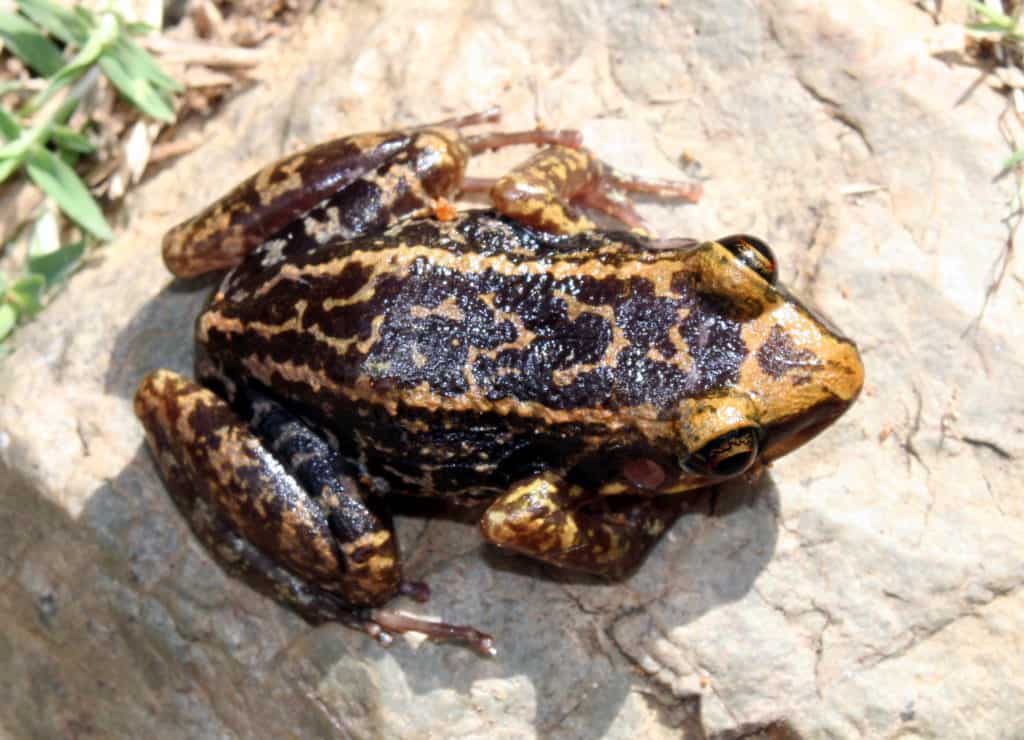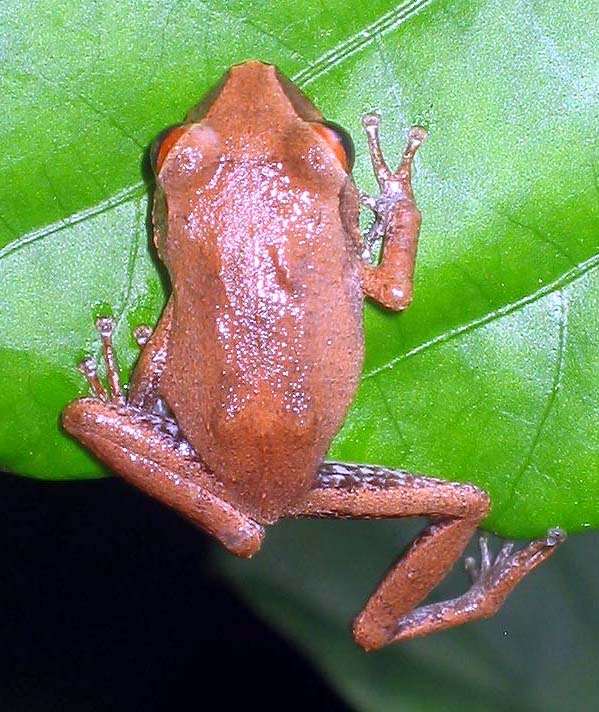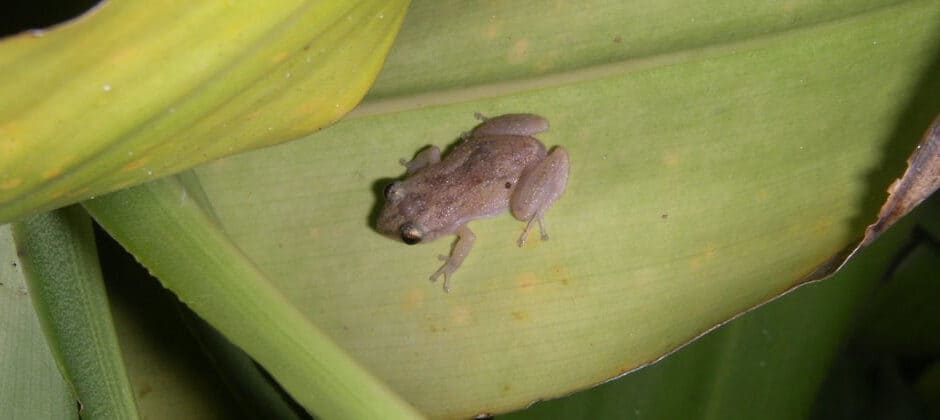Share this article
WSB: Community scientists help researchers survey frogs
For years, many believed the mute coqui, a small endangered frog endemic to the Virgin Islands, was aptly named. On an island full of chirping tree frog species like the whistling coqui and the invasive Puerto Rican coqui, there wasn’t much space left for the mute coqui to speak up.
But an ongoing project turns to community members to record frog sounds in the dozens of islands that make up the archipelago has revealed that the mute coqui may not be so mute after all — we just weren’t listening well.
“In fact, it does call, but it calls sporadically and it doesn’t chorus,” said TWS member Renata Platenberg, a wildlife biology professor at the University of the Virgin Islands.
Platenberg led a study published recently in the Wildlife Society Bulletin that describes how she and her colleagues got such a project off the ground to learn about the frogs in an area that would otherwise be difficult for researchers to survey.

Researchers found that mute coquis weren’t so mute. Credit: Renata Platenberg
The Virgin Islands are made up of three main islands, but also about 50 islets, many of which are hard for biologists to access. In 2015, while buried in teaching work that typically kept her from the field, Platenberg began sending students out to collect recordings of the seven species of frogs found across the Virgin Islands, including four endemic species and three nonnatives. The recordings were a success, and pretty soon she realized the potential for expanding her study, especially since more and more people had smartphones with recording ability.
“Why don’t I get everyone to use their phone?” she asked herself.
She put advertisements in the newspaper, sent out calls for help on social media, and enlisted the help of university faculty and students. Her team received more than 270 recordings, with location data from all across the archipelago, from community participants across the two-week period of their study in 2015.
“Frogs, like birds here, are everywhere here,” she said.
Many of the recordings collected came from areas the researchers wouldn’t have been able to easily access such as private land. “You can get into areas that you didn’t know needed surveys,” Platenberg said. “The quality of the recordings is really comparable to professional recording equipment.”

An Antillean coqui. Credit: Renata Platenberg
This study is just a proof of concept to show that using community science works, Platenberg said. She and her team are working on ways to use algorithms and computer programs to detect the sounds of the different frogs without researchers having to listen to hours of recordings. They also are looking at working with community science apps like iNaturalist.
She said the data they collected will help them surveys amphibians. Three of the seven species of frogs found on the islands are nonnatives. The Cuban tree frog (Osteopilus septentrionalis) has a voracious appetite for native fauna, while the Puerto Rican coqui (Eleutherodactylus coqui) outcompetes its close native relatives on the Virgin Islands. Cane toads (Rhinella marina) can cause harm when people’s pets try to make a meal of the toxin-covered amphibians. Platenberg said that these surveys can help researchers map the spread of these invasives across the islands.
They also discovered that mute coquis (Eleutherodactylus lentus), listed as endangered by the International Union for Conservation of Nature due to small native distributions and threats from development, do make noise despite their name — it’s just a lot less regularly than other frogs on the islands. While whistling coqui (Eleutherodactylus cochranae), Antillean coqui (Eleutherodactylus antillensis) and the Caribbean white-lipped frog (Leptodactylus albilabris) all call quite frequently, separating their calls from each other by using different frequencies on the soundscape, the mute coquis chirp in the middle of the night, when other frogs are mostly silent.
The recordings are also helping the researchers track down another frog endemic to the British Virgin Islands and listed as endangered by the IUCN called the Virgin Islands coqui, or British Virgin Islands Bo Peep frog (Eleutherodactylus schwartzi).
“Hopefully, this project will provide some illumination for the distribution of this animal,” Platenberg said.
This article features research that was published in a TWS peer-reviewed journal. Individual online access to all TWS journal articles is a benefit of membership. Join TWS now to read the latest in wildlife research.
Header Image: A whistling coqui on the Virgin Islands. Credit: Renata Platenberg








